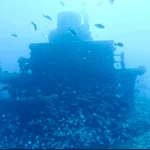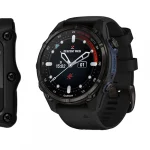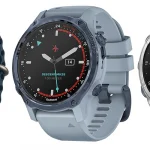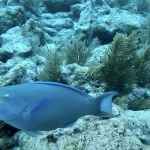Understanding the Florida Coastal Divide
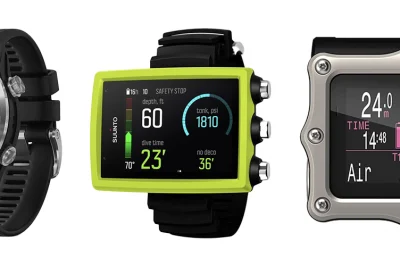
Table of Contents
- Understanding the Florida Coastal Divide
- Decoding Diver’s Data: Tidal Forces and Their Effects
- Avoiding Common Diver Mistakes on Florida’s Coasts
- The Evolution of Diving Computer Technology for Different Coasts
- What the Numbers Say: Salinity, Currents, and Computer Adjustments
- Hidden Treasures: The Best Dive Spots on Each Coast
- Beyond the Waves: Biodiversity Differences and Their Impact
- Safety First: Temperature and Pressure Settings for Optimal Dives
Introduction
In the world of diving, understanding the nuances of different diving environments is crucial, especially when it comes to selecting the right gear. Florida, with its diverse coastlines—the Gulf of Mexico and the Atlantic Ocean—offers unique underwater experiences that demand specialised equipment. In this post, we explore why these two coastal regions require different approaches when setting your diving computer, helping you make an informed decision for your diving adventures.
Understanding the Florida Coastal Divide
Decoding Diver’s Data: Tidal Forces and Their Effects
Diving in Florida requires an understanding of the tidal forces that influence both the Gulf of Mexico and the Atlantic Ocean. These tidal forces not only affect the marine environment but also have significant implications for scuba divers’ computer settings.
On Florida’s Atlantic coast, tides are predominantly semidiurnal, meaning there are typically two high tides and two low tides every day. This results in larger tidal ranges, which can lead to notable depth changes during dives. Conversely, the Gulf of Mexico experiences mixed tides, a combination of diurnal and semidiurnal patterns, resulting in smaller yet less predictable tidal changes. Every diver should take into account the types of tides prevalent in their dive location to adjust computer settings accurately:
- Know the Tidal Patterns: Check whether the dive site has semidiurnal or mixed tides to inform depth tracking.
- Monitor Tide Tables: Before each dive, consult local tide charts to understand expected tidal changes.
- Adjust Depth Sensors: Use real-time depth sensors when available, especially in mixed tidal environments.
- Safety Margins: Include a buffer in depth calculations, particularly in areas with large tidal ranges.
- Plan for Variability: Prepare for depth adjustments during the dive by frequently checking your computer against visible conditions.
The dynamics of tides in Florida vary greatly between coasts; hence, divers must equip themselves with the necessary knowledge to make informed decisions concerning their diving computers and safety.
Decoding Diver’s Data: Tidal Forces and Their Effects
Common Errors and Computer Adjustments in Gulf vs. Atlantic Dives
Thermocline Mismanagement (Gulf)
Issue: Rapid temperature changes disrupt buoyancy control, increasing risks.
Solution: Set your computer to altitude mode and use conservative gradient factors.
Current-Induced Deco Omissions (Atlantic)
Issue: Strong currents can drift divers, complicating ascents.
Solution: Program for extended deco stops and use GPS for position monitoring.
Depth Limit Exceedance (Gulf)
Issue: Calmer waters may lead to overconfidence in depth limits.
Solution: Set depth alarms and use conservative dive plans.
Air Mismanagement in Currents (Atlantic)
Issue: Fighting currents may deplete air supply.
Solution: Increase air reserve settings and monitor air estimates closely.
Visibility-Related Rapid Ascents (Gulf)
Issue: Low visibility can lead to disorientation.
Solution: Enable alarms and use structured ascent plans.
Avoiding Common Diver Mistakes on Florida’s Coasts
Diving Computer Technology Trends for Gulf and Atlantic Environments
The landscape of diving computers is evolving, offering tailored solutions for the Gulf and Atlantic coasts. Understanding these trends is essential for divers selecting equipment suited to their environments.
Key Tech Innovations
- Redundant Systems and Battery Reliability: Dual-device setups provide safety, and improved battery life supports extended dives.
- OLED Colour Displays: Enhanced visibility for low-light and turbid conditions.
- Integrated Real-Time Data and HUDs: Incorporates environmental data, aiding adaptation to conditions like currents and thermoclines.
Environment-Specific Adaptations
- Display Technology: Bright OLED for the Gulf; high-contrast for the Atlantic.
- Battery Efficiency: Optimised for local water temperatures and dive durations.
- Connectivity: Real-time monitoring and data sharing enhance safety.
Future Predictions
- AI-Driven Automation: Real-time adjustments based on conditions.
- Eco-Conscious Design: Use of sustainable materials for eco-focused practices.
- Enhanced Connectivity: Bluetooth and Wi-Fi integration for improved safety.
The Evolution of Diving Computer Technology for Different Coasts
Salinity Zones and Typical Values
Coastal US estuaries, including the Gulf and Atlantic, are characterised by different salinity zones:
- Tidal Fresh Zone: 0–0.5 ppt, found near river mouths.
- Mixing Zone: 0.5–25 ppt, transitional areas where freshwater meets saltwater.
- Seawater Zone: ≥25 ppt, typical of open ocean environments.
Average Salinity: The Atlantic is approximately 36.01 ppt; the Gulf aligns closely but may vary in estuarine areas.
Diving Computer Settings
Scuba diving computers typically default to standard seawater or freshwater settings. Adjustments should be made according to the environment:
| Environment | Recommended Setting | Rationale |
|---|---|---|
| Open Ocean | Seawater (35 ppt) | Matches typical conditions in Atlantic and Gulf waters. |
| Estuaries/Mixing Areas | Adjust to 15–25 ppt | Accounts for brackish conditions; check local guidelines. |
Key Considerations:
- Salinity Variability: Seasonal changes and other factors can affect salinity levels.
- Pre-Dive Research: Utilise resources for current conditions in relevant areas.
Regional Insights
- Gulf Coast: Significant variability in salinity; typically stabilises at 35 ppt offshore.
- Atlantic Coast/Florida: Generally aligns with open-ocean trends; coastal zones may require settings adjustments.
Dive Computers
- Diving Computers for Female Divers
- Wreck Diving Computers
- Beginner Diving Computers
- Low-Light Diving Computers
- Technical Diving Computers
- Freediving Computers
- Underwater Photography Diving Computers
- Cold-Water Diving Computers
- Travel-Friendly Diving Computers
- Multi-sport Diving Computers
- Budget-Friendly Diving Computers
- Advanced Recreational Diving Computers
- Smartwatch-Compatible Diving Computers
- Child-Friendly Diving Computers
- Military or Professional Diving Computers
What the Numbers Say: Salinity, Currents, and Computer Adjustments
Top Dive Spots in Florida’s Gulf and Atlantic Coasts
Discovering Florida’s underwater ecosystems involves exploring diverse dive sites on both coasts. Here are highlights from each coast and key computer settings to enhance diving experiences:
Gulf Coast Highlights
- Florida Panhandle Shipwreck Trail: Series of 12 wrecks requiring nitrox or air settings with managed depth limits.
- Devil’s Den (Williston): Freshwater springs demanding freshwater settings due to lower density.
- Pensacola and Navarre Beach Reefs: Ideal for beginners; adjust for the shallow nature of these dives.
- Destin Jetties: Perfect for drift diving; prepare for strong currents.
Atlantic Coast Highlights
- Florida Keys Coral Reefs: Living coral reefs requiring saltwater condition setups.
- Wreck Trek (Fort Lauderdale/Miami): Excellent visibility with depth-adjusted setups for decompression.
- Blue Heron Bridge (Riviera Beach): Rich biodiversity in shallow waters; simple shallow dive settings suffice.
Swim Computer Settings Recommendations
- Gulf Wreck Dives: Use air or nitrox, adjusted for current conditions.
- Freshwater Springs: Set to freshwater mode to account for lower density.
- Saltwater Reefs: Configure for saltwater mode, recalibrating for altitude.
- Drift/River Dives: Enable drift protection features for navigating currents.
Understanding these environments is crucial for divers to optimise their diving computer settings tailored to specific locations.
Hidden Treasures: The Best Dive Spots on Each Coast
Biodiversity variations between the Gulf of Mexico and the Atlantic Ocean significantly influence the choice of diving settings due to species distribution, migration patterns, and habitat differences. These factors are essential for optimising diving computer settings for safety and efficacy.
Genetic Diversity Patterns and Vertical Migration
The Gulf of Mexico hosts species with unique vertical migration behaviours that influence their genetic diversity and diving habits:
- Oplophorid Species: Benefiting from the Gulf Loop Current, affecting diving behaviour and genetics.
- High Intraspecific Diversity: E.g., Rimicaris robusta indicates adaptation to minimal inter-basin migration.
Habitat-Specific Biodiversity Influences
The Gulf’s distinct habitats highlight the importance of divers being aware of their surroundings to tune their dive settings effectively:
- Coral Reefs: Important for biodiversity but demand tailored settings due to shallow waters.
- Mesopelagic Zone: Requires understanding species’ vertical migration for optimal computer configurations.
These ecological dynamics allow divers to adjust settings, accounting for species behaviours and conditions encountered at various depths.
Key Findings
- Depth-Driven Connectivity: Influences genetic diversity across regions.
- Habitat Fragmentation: Variability in species connectivity and abundance necessitates thoughtful computer settings.
Divers should consider this complex interplay between biodiversity, species behaviour, and habitat to ensure a safe, enriched diving experience.
Beyond the Waves: Biodiversity Differences and Their Impact
Pressure Settings
For safety, set the Turn Pressure typically around 1000 psi and End Pressure at 500 psi. These settings aid in maintaining air reserves during ascent and emergencies.
Depth Limits
Common depth alarms should be set to 130 feet, helping prevent decompression sickness.
Temperature & Environmental Monitoring
Temperature variations, such as a drop from 78°F to 68°F, dictate exposure time limits, emphasising monitoring capabilities on diving computers.
Additional Configurations
Utilise Ascent Rate Notification Tools and Deco Alarms to manage ascent rates and decompression.
CCRs vs. OC (Open Circuit)
For those using Closed-Circuit Rebreathers (CCRs), gradient factors should be cautiously adjusted for complex dives.
Safety First: Temperature and Pressure Settings for Optimal Dives
Core Features for Both Coasts
Essential dive computer functions for safety include:
- Ascent rate monitoring to prevent decompression sickness.
- Nitrox compatibility for optimised bottom times.
- Bluetooth/data upload for post-dive analysis.
- Safety stop countdowns to ensure safe nitrogen offloading.
Gulf Coast Priorities
- Favour enhanced battery life for multi-site dives.
- Basic gas management suffices for the Gulf’s conditions.
- 3D tracking aids in mapping routes with less current presence.
- Big numbers mode improves readability in bright settings.
Atlantic Coast Priorities
- Advanced alerts for current-sensitive scenarios.
- Haptic feedback for audible alerts in noisy environments.
- Technical support for gas mixes supporting deep explorations.
- GPS and drift tools for current navigation safety.
- Low-light optimisation for night and blackwater dives.
Feature Comparison Table
| Feature | Gulf Coast Emphasis | Atlantic Coast Emphasis |
|---|---|---|
| Safety Alerts | Ascent rate monitoring | Rapid ascent with haptic feedback |
| Dive Style | Shallow, multi-site | Drift, technical, wreck |
| Visibility Tools | Basic modes | Adaptability for low-light |
| Gas Management | Air/Nitrox | Trimix/multi-gas |
| Navigation | 3D tracking | GPS/current mapping |
Regional Recreational vs. Technical Diving
- The Gulf supports beginner diving with standard setups.
- The Atlantic requires advanced features for technical dives.
Gulf divers might opt for nitrox-compatible equipment with a focus on battery duration, while Atlantic divers could benefit from models facilitating technical exploration.
Sources
- Windows to the Universe – The Tides
- Coastal Wiki – Ocean and Shelf Tides
- NOAA – Tidal Data and Analysis
- ScubaBoard – Gulf of Mexico vs Atlantic
- TripAdvisor – Scuba on Gulf Side or Atlantic Side
- Underwater Kinetics – Best Dive Locations in Florida
- Diver Right In Scuba – Scuba Diving in 2025
- Scuba Scribbles – Dive Gear Trends

